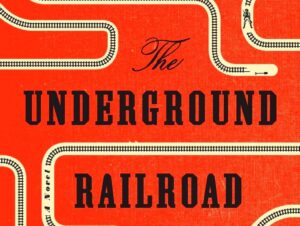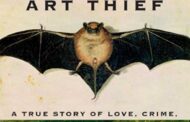Book Short
Underground Railroad: A Novel of America
By Stephanie Miller

A dose of courage and forbearance are needed to engage and learn from New York Times bestselling author Colson Whitehead’s “Underground Railroad” (2016) for which he won the Pulitzer.
The book is beautifully written: transporting landscape, intensely drawn and complex characters, and a compelling storyline. It’s also sobering. Whitehead weaves stories about the treatment of slaves around a real railroad, a network of tunnels and trains running deep in the earth. Ridgeway, a particularly tenacious slave catcher, makes clear the metaphor: “Most people think it’s a figure of speech, the underground. I always knew better. The secret beneath us, the entire time.”
Transformations
The central character Cora, a third-generation slave who is a passenger on the railroad, marvels at the tunnels. She wonders, “Who are you after you finish something this magnificent—in constructing it you have also journeyed through it, to the other side. On one end there was who you were before you went underground, and on the other end a new person steps out into the light.” So too is the reader transformed—you cannot finish this book without questioning your own role in racism in America today.
It’s not comfortable to read about burning people alive as luncheon entertainment; about shackling fellow humans to stakes in the ground, watching for sport while dogs tear them apart; about repeated rape; about selling mothers away from children—nay, about selling humans!— about whipping and chaining and starving people and — perhaps worst of all — justifying this as right and proper behavior to a “lesser” race.
Hopelessness & Hope
All that horror and hopelessness is in “Underground Railroad”. Most of the characters, white and black, die in terrifying torture. Being active in slavery—willingly or unwillingly, for it or against it—is a dangerous business.
The train rides are lonely and scary. At her first stop, Cora is lulled into believing that Blacks will have a chance to live peacefully and freely alongside whites. Then she learns of schemes to experiment with new medical treatments to sterilize thousands in order to “correct” the population gap. There are too many Blacks for the whites to sleep easily.
Each station brings new hopes, but also fresh disappointments and diabolical cruelties. Cora hardens herself to the fact that “her skin is black, and this is how the world treats Black people.”
A Black preacher aims for hope. “America too, is a delusion, the grandest one of all. The white race believes—believes with all its heart—that it is their right to take the land. To kill Indians. Make war. Enslave their brothers. This notion shouldn’t exist if there is any justice in the world, for its foundations are murder, theft, and cruelty. Yet here we are.”
Micro-Shorts
‘Land of Cockaigne’ by Jeffrey Lewis
Welcome to the conflicted community of imagined Sneed’s Harbor in Maine. It’s an old theme—city folks vs. locals, rich vs. not, helpful vs. disrespectful. But the writing is so beautiful and full of longing, the conflicts touch us outside the normal tropes. Maine author Jeffrey Lewis has a lyrical and yet spare style that draws us into this rather sad, but also hopeful, story.
‘The Goldfish Boy’ by Lisa Thompson
Recommended to me by one of my favorite seven-year-olds, this Scholastic treasure is perfect for readers of any age. Staying inside due to his undiagnosed OCD, Matthew Corbin spends a lot of time looking out and bleaching his room over and over again. When the young child next door goes missing, being the neighbor who sees out the window a lot becomes an asset – and a fresh source of suspicion. This whodunit is thrilling enough for a seven-year-old, and tender and human enough for us all.
‘The City of Your Final Destination’ by Peter Cameron
Within a few pages, we are drawn into a swirling pool of competing ambitions. A young graduate student travels to Uruguay to gain access to records held by the three executors of the estate of a mostly forgotten, obscure author. Drama ensues. With richly drawn characters and unexpected plot twists, we witness the impact of fierce desires, abundant regrets, and nearly overwhelming loneliness. It’s hard to decide if everyone finds a happy ending, although I choose to believe that the student’s arrival is the inflection point all their lives were longing for.





